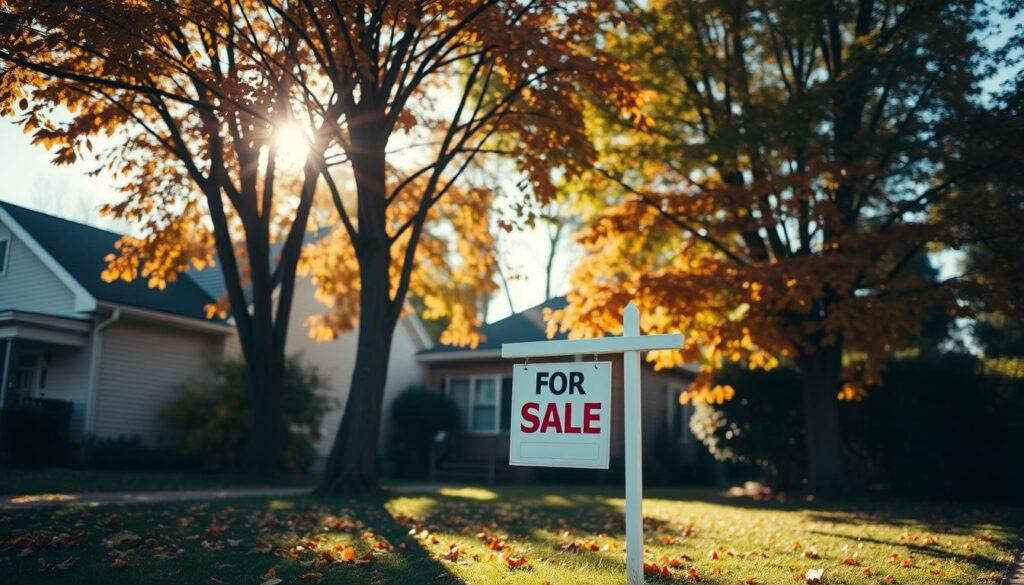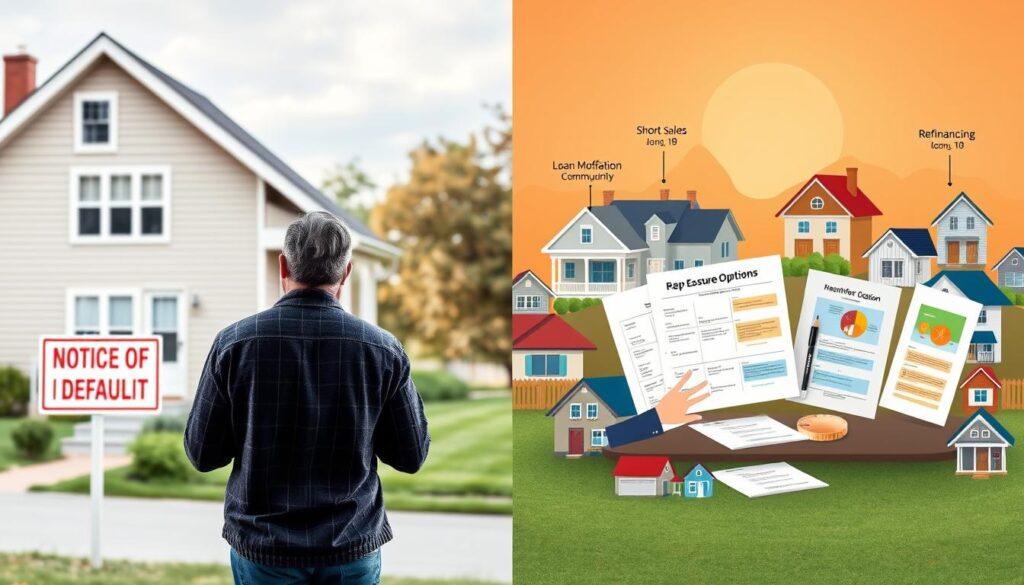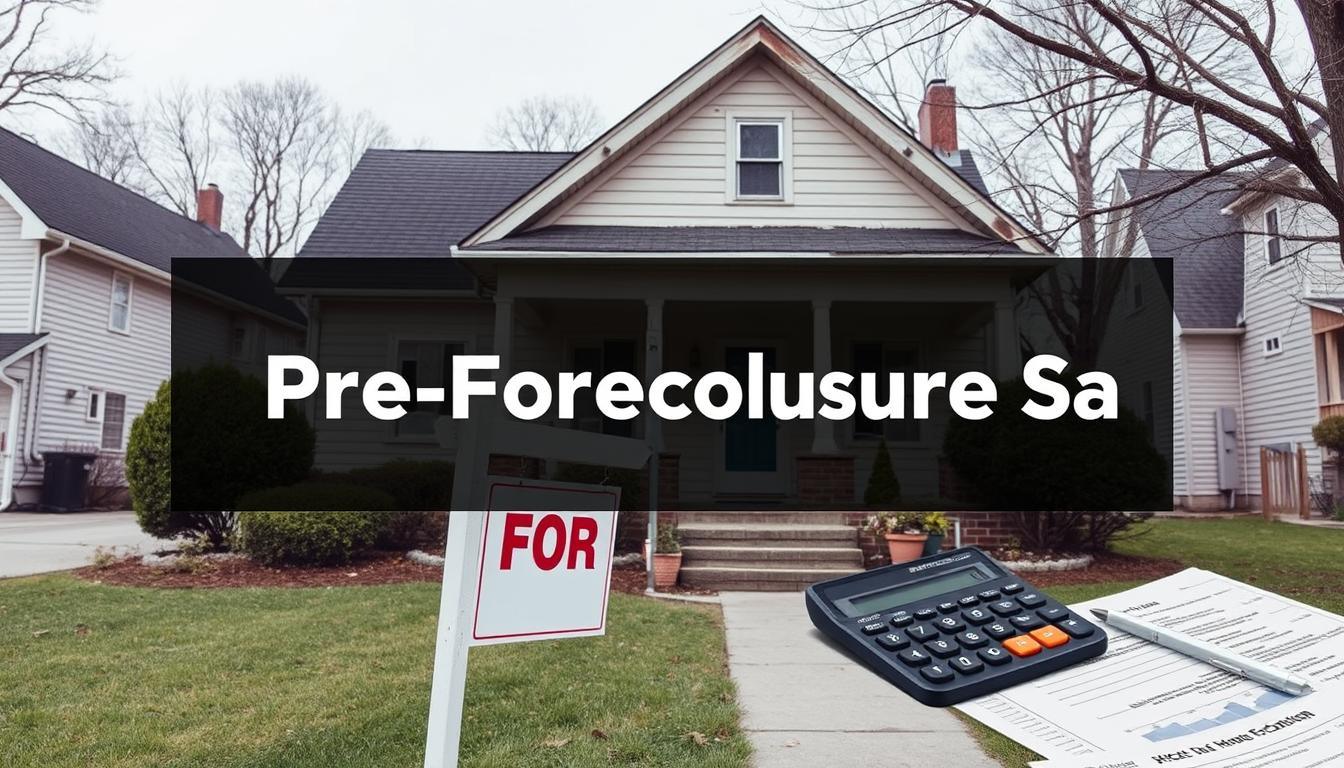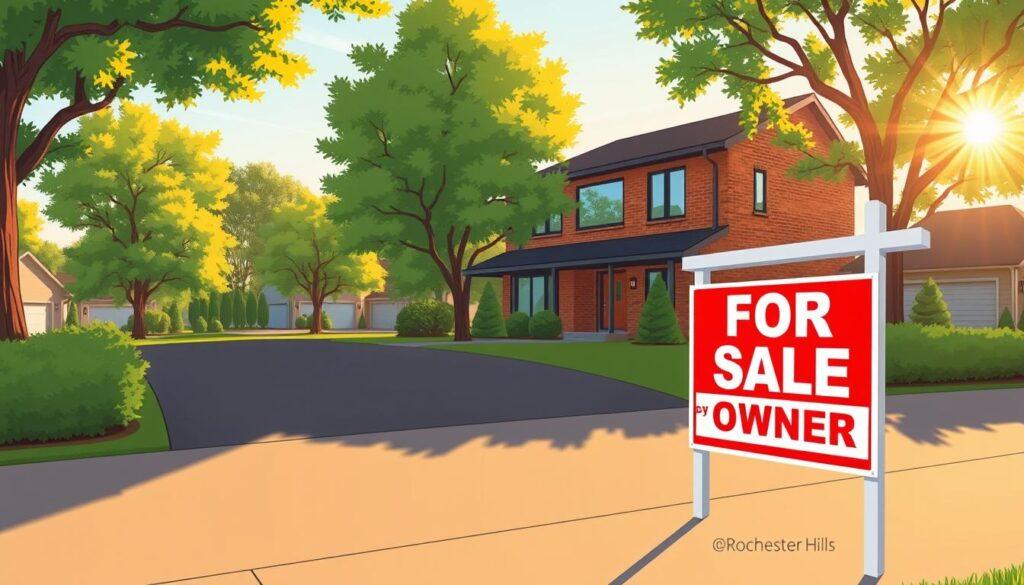Ever wondered what happens before a home goes into foreclosure? The pre-foreclosure phase is a critical but often unknown part of the process. It’s key for homeowners in trouble and smart investors. Knowing about pre-foreclosure can help you make better choices.
This article will explain pre-foreclosure in detail. We’ll cover everything from the first notice of default to the options for homeowners. We’ll also show how understanding this stage can help you make informed decisions.
Key Takeaways
- Pre-foreclosure occurs once a homeowner is 90 days past due on their mortgage.
- A notice of default is issued after missing three consecutive payments.
- Homes in pre-foreclosure are often priced below market value.
- Investing in pre-foreclosures can provide attractive financing options.
- The pre-foreclosure stage is the best time for buyers to find deals with less competition.
What is Pre Foreclosure?
Understanding pre foreclosure is key for homeowners in tough financial spots. It’s a time when homeowners can still find ways to keep their home. The pre foreclosure process starts when homeowners miss three or more mortgage payments.
Lenders then send a notice of default. This notice warns that they might take legal steps to foreclose if the debt isn’t paid.
Definition and Overview
The pre foreclosure phase is when a borrower misses mortgage payments, leading to foreclosure threats. Homeowners usually get about 90 days to catch up on payments after getting a notice of default. This time allows them to look into options like repayment plans or selling the home.
Notice of Default Explained
The notice of default is a serious warning from lenders about unpaid debts. It starts the pre foreclosure process, giving homeowners a short time to fix their situation. If they don’t, they could lose their home, hurting their finances and credit score.
Acting quickly during this phase can prevent these serious consequences.
How Does the Pre Foreclosure Process Work?
The pre foreclosure process has several key steps for homeowners who can’t pay their mortgage. It’s important for both homeowners and potential buyers to understand this process. Here’s a breakdown of the main steps and the timeline involved.
Key Steps in the Process
The first step is when the lender files a notice of default. This shows the homeowner missed payments. Then, there are other actions that might happen:
- Receiving Notice: The homeowner gets a certified letter from the lender, usually within 90 days of the missed payment.
- Communication: Lenders try to talk to the homeowner to find solutions.
- Exploration of Solutions: Homeowners might try to renegotiate the loan, set up repayment plans, or consider short sales.
- Possibility of Foreclosure: If no solution is found, foreclosure can start within 30 days after the notice.
Timeline of Pre Foreclosure Phase
The pre foreclosure timeline can vary a lot, depending on state laws and the situation. It usually lasts from a few months to over a year. Here are some important points:
| Event | Timeline |
|---|---|
| Missed Payment | 0 days |
| Notice of Default Issued | 90 days after first missed payment |
| Communication and Options Exploration | 1-3 months |
| Foreclosure Proceedings Begin | 30 days post notice if unresolved |
Understanding Pre Foreclosure Sale Meaning
The term “pre foreclosure sale” is important for homeowners and buyers. It means selling a property before it goes into foreclosure. Homeowners do this to avoid the worst of foreclosure’s effects on their finances.
Properties for sale in this stage often have lower prices. This makes them appealing to buyers looking for good deals. Selling early can also help homeowners keep their credit score from taking a big hit.
When dealing with pre-foreclosure sales, it’s key to understand the details. This includes any liens or legal issues. Sellers and buyers should do their homework and might need to talk to real estate experts.

| Aspect | Pre Foreclosure Sale | Foreclosure |
|---|---|---|
| Property Condition | Usually well-maintained | Can vary, often poorer condition |
| Impact on Credit | Less severe | Severe negative effects |
| Sale Price | Higher than foreclosures | Lower to sell quickly |
| Control over Sale | More control for homeowners | Limited control, quick sale |
| Typical Buyers | Investors or homeowners | Predominantly investors |
Options Available During Pre Foreclosure
Homeowners facing pre-foreclosure have several options to regain control of their finances. Knowing these options is key to finding the best path forward.
Making Back Payments
Making back payments is often the first step for homeowners in pre-foreclosure. By paying off what’s owed, many can reinstate their loan and avoid further lender actions. This helps keep credit scores high and ownership of the home intact. It’s important to talk to the lender to see if this is possible and what’s needed.
Loan Modifications
Loan modifications are another good option. Homeowners can work with lenders to change their mortgage terms to make payments easier. This might include lowering the interest rate or extending the loan term. It can help reduce financial stress and lead to more stable payments.
Short Sales and Deeds in Lieu of Foreclosure
For those who can’t make back payments, short sales or deeds in lieu of foreclosure might be better. A short sale lets the lender accept less than the full amount owed when selling the property. This can help the homeowner move on more smoothly. A deed in lieu of foreclosure means giving the property back to the bank, ending the mortgage obligation and helping the lender recover faster.

Pre Foreclosure vs Foreclosure
It’s key to know the difference between pre-foreclosure and foreclosure for homeowners facing money troubles. Pre-foreclosure is a warning sign that lets homeowners fix their mortgage issues. Foreclosure, on the other hand, is when the lender takes the property back through legal steps.
Differences in Legal Proceedings
The legal aspects of pre foreclosure are quite different from foreclosure. Pre-foreclosure starts when a homeowner is 90 days late on payments. This stage can last from 3 to 10 months, giving homeowners time to find solutions like negotiating or selling the property. Foreclosure, however, is a formal process that starts when the homeowner can’t fix the default. It involves filing lawsuits, getting judgments, and eventually evicting the homeowner if no deal is made.
Impact on Homeowners
The homeowner impact is huge in both phases. In pre-foreclosure, homeowners can still save their homes by exploring options like loan modifications or refinancing. This stage helps avoid major credit score harm. But, once foreclosure happens, the damage is severe. Homeowners see their credit scores plummet and face extra fees. Foreclosure’s effects can last for years, making it hard to get loans or mortgages later on.
Benefits and Risks of Pre Foreclosure Sales
Investing in pre-foreclosure sales has its ups and downs for both buyers and homeowners. Knowing these points can help make better choices during the process.
Advantages for Homeowners
Homeowners in tough financial spots have big advantages during pre-foreclosure. They are very motivated to sell quickly. This can lead to lower prices than market value.
- Opportunity to avoid further credit damage.
- Reduction of stress by quickly alleviating financial burdens.
- Potential for seller-funded repairs, making homes more marketable.
Challenges for Buyers
Buyers should know the risks of pre-foreclosure sales too. These homes might have hidden costs like unpaid liens. It’s crucial to do your homework well. Legal issues can also complicate things.
- Properties may require significant repairs, affecting profit margins.
- Condition of the home may not be as expected, necessitating full inspections.
- Competition remains high in securing quality properties.
Using tools like real estate data platforms can help buyers make smart choices. Knowing the pros and cons helps in making confident real estate investments.
Conclusion
Understanding pre foreclosure insights is key for homeowners at risk and potential buyers. This stage warns of foreclosure, giving homeowners a chance to negotiate and protect their finances. It’s important to grasp pre foreclosure processes to avoid financial loss.
For smart investors, pre-foreclosure is a great chance to buy properties at good prices with less competition. But, it needs careful planning and professional help. Investors must look at market trends, property condition, and renovation costs.
It’s vital to keep looking for solutions until a property is sold or foreclosed. For more help, check out Minnesota Home Brothers. They help homeowners and buyers through pre-foreclosure issues.






